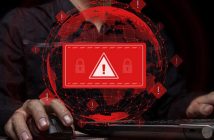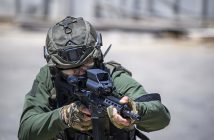What’s going on in your city right now? Do you know how the local parks and public areas are being used? What about vandalism? Is your city marred with graffiti? Are there areas of your city that could benefit from security and surveillance measures?
By integrating surveillance in parks, squares, streets and public buildings from one central control room, city managers can answer these questions and implement plans for a safe and secure city. An integrated system supports multiple stakeholders, giving the correct person access to information relevant to their purpose. Surveillance implemented this way will benefit both those that are responsible for the safety of cities as well as the citizens living in them. There are of course, challenges for each of these types of installations but there are technology solutions that can counteract these challenges. Full integration through centralised and interconnected network video between city and infrastructure installations is the best way to reap the benefits of a surveillance system. Managing a city and all that it entails, from security to planning, is complex to say the least. From parks and squares to streets and public buildings, there are any number of incidents that could be taking place, from traffic congestion at a particular junction to crime and vandalism against citizens. Each location has its own challenges when it comes to video surveillance.
For instance, parks are typically large areas so surveillance equipment needs to offer high-speed coverage with precise zoom, control of the area being viewed and auto tracking for when following the route of a specific object or person is necessary. Varying light conditions, and restricted visibility due to trees and foliage can also make it difficult to recognise movements. A camera equipped with Lightfinder technology provides detailed video, even in darkness. It is vital that the cameras in use are able to point to a specific place or target. Often it is the case that incidents occur when no one other than the criminal is present. In this instance it is important to have audio detection as well as support from a microphone. The addition of a loudspeaker offers an immediate deterring effect.
Squares and parking areas tend to be very wide areas with potentially many occurrences taking place simultaneously. This type of installation requires both an overview as well as the ability to zoom in on details. So it is important to have a camera with precise pan, tilt and zoom (PTZ) from overview to specific details. Even with shadows and light reflection, digital zoom can give both an overview and detail in the entire field of view. And monitoring of wide areas in 16:9 format with HDTV quality images gives detailed feedback of any activity taking place.
The heart of any city is its streets and intersections and if they are not flowing properly it could be detrimental, not only to the city’s citizens who may be struggling through congested roads, but also to the life blood of the city – its businesses. The state of the roads and traffic flow is also important when it comes to emergency vehicles and their ability to reach emergency situations as quickly as possible. Being able to receive clear images is key to the flow of the city but also for identification of faces and license plates in regards to specific instances. Having a PTZ camera that delivers clear images even at night or in adverse weather conditions gives the ability to identify vehicles and drivers. And with pre-sets such as wide view and optical zoom, security cameras are able to look into traffic, seeing cars head on at night. Again, it is important in situations such as these to get both an overview and a detailed image with precise pinpointing on an object or person. Whether it is the police or security managers who are monitoring the input from cameras, they need to be able to read license plates from a great distance and to have a quick focus on moving objects to keep track of activity in real time as well as for post incident review.
Monitoring public buildings has its own set of challenges. They tend to have large entrances, sometimes with glass doors that can make it difficult for cameras to get clear images due to the reflection off the glass and because of strong backlight. Again for these big spaces, it is necessary to have cameras that can follow an object, moving within the fields of view in corridors and halls. With these types of spaces there are often long corridors and perimeters that need protection by seeing events as they happen. Technology is needed that patrols gates, doors and vulnerable areas pointing in several directions, monitoring traffic that is passing slowly or quickly with precision. As installations of this nature need discreet surveillance, it is likely a solution that provides good colour video, enough for identification, even when the use of white lights is not an option, is necessary. Hotels for example, don’t tend to have bright white lighting in their buildings but still need a surveillance solution that provides clear images and identification.
Of course the idea of one centralised, integrated surveillance system, watching over a city and taking care of its citizens, is great in theory. The main challenge with the execution of such a plan comes from the citizens themselves. It is the concern of public privacy versus the surveillance goals of a city, the right to feel safe and secure without feeling as though they are being monitored. However, this need not be an issue. In a city being watched by security cameras they need only be placed and directed at public spaces, not into homes and businesses. And in instances where there are sensitive areas, privacy masks can be used to exclude that area from the monitored field of view. It isn’t necessary to invade the public’s privacy in order to run a city smoothly and safely.
A city’s video surveillance system should be seen as a tool that makes for a safer, more secure city. For example, cameras placed in communal places such as parks and public buildings can in effect be an extension of the police force, working non-stop to support their efforts in both evidence collection but also as a real-time investigative tool. With one centralised control room, cameras can provide access to clear images not only to city managers but also to officers, which is particularly useful when cameras are placed in areas where police would like to be, but can’t. Cameras placed in public spaces allow police to make better use of their resources.
For example, if an officer is on patrol they can view the feed coming from a park either on their mobiles or on their patrol car computer system, to check everything is okay or if their presence is needed. It is not necessary that the cameras work with any sort of facial recognition system or pre-existing database. As long as the cameras installed have the ability to zoom in they can identify individuals. If a situation does arise, say there is incidence of violence in the park, police can look through the footage to identify suspects, where they may have gone, how they were travelling and who they may have been with.
If installed properly, surveillance cameras are a way to keep cities safe and running smoothly. They are a deterrent for anti-social behaviour as well as a tool for authorities.
Making sure the correct surveillance system in place is vital to protecting and managing a city efficiently and with full integration, from video management software to processes, to monitoring and maintenance, it can be done with one single control room.
Wai King Wong is Sales and Country Manager Australia and New Zealand for Axis Communications. Wong is responsible for the management of all sales and operational activities in ANZ and has held the position since November 2002. He has extensive knowledge and experience in the networking and software deployment and support arenas and holds a bachelor of Business in Business Information Systems from the Royal Melbourne Institute of Technology (RMIT) and a Master in Business and Technology, UNSW.






